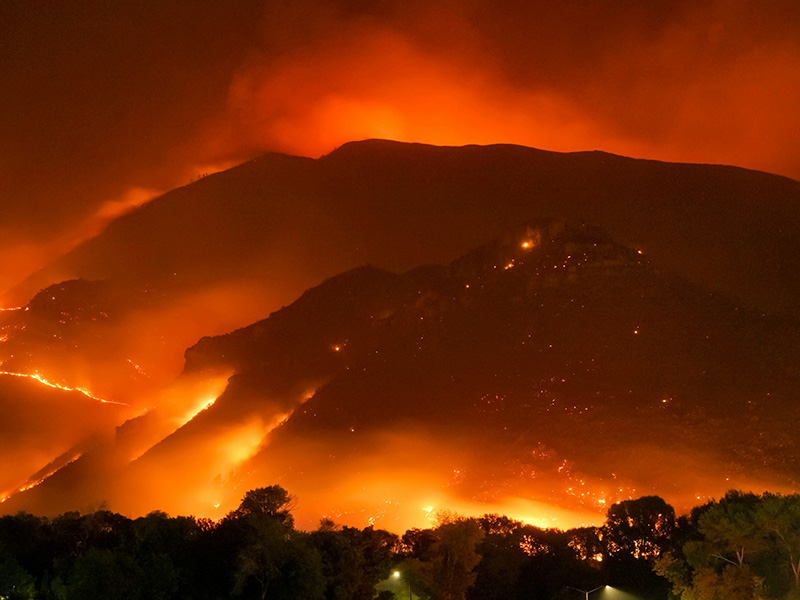
Photo by Cassie Boca on Unsplash
In Robert A. Heinlein’s 1961 seminal science fiction book, Stranger in a Strange Land, a “Fair Witness” could be called into any situation where the truth needed a record. Possessed of total recall, having gone through extensive training, and with a reputation beyond question, a Fair Witness would appear in a white robe and listen. If called to “witness” the record given was considered inviolate.
Jubal: You know how fair witnesses behave.
Gillian: Well… no, I don’t. I’ve never met one.
Jubal: (Speaking to Anne as a fair witness) That house on the hilltop—can you see what color they’ve painted it?
Anne: It’s white on this side.
Jubal: “You see? It doesn’t occur to Anne to infer that the other side is white, too. All the King’s horses couldn’t force her to commit herself…unless she went there and looked – and even then she wouldn’t assume that it stayed white after she left. (Chapter XI)
As a fair witness the facts are what is observable, nothing more, nothing less. At times the truth is like the clear ringing of a bell to us: pure, simple, unmistakable. “The house is white on this side!” we say. But that truth is subject to change as the light on the house changes. As we observe we may discover that side of the house is really more of a light beige, maybe a little yellow in places. And in the setting sun it’s more rose colored. And the trim is light green.
Then we might realize the moment the house is white is subject to the seasons, and the seasons are subject to the sun/earth trajectories. We each can observe Summer Solstice where we are by putting a stick in the ground, but it must be a sunny day, and my noon may not be your noon, and your summer could be my winter. If we are a fair witness we can say only what we can confirm is true in that moment, from our perspective, and where we are. Anything else is based on assumptions.
I opened this series of blogs with Living at the Margins Requires Context Awareness. It is another level of understanding that to tell the truth we are bound by our awareness of the context where we are.
Our context awareness is a gift we bring to Truth. We describe what we see from our perspective. We pass along information only when we can include where we learned it and why we know it is true. We become a trusted reference.
Being a Fair Witness for Personal Experience
Little irritates certain of my family and friends as much as being questioned about a statement they just made and believe to be true. They want to be a trusted reference. What gets in the way is that what they know doesn’t align with what their listener knows/doesn’t know or experiences. One’s thoughts, feelings, and interpretations are one’s own.
It helps when the opening phrase can clue the listener that you are offering your perspective, the “truth” of your point of view.
- I observe … My experience … (I know these facts: who, what, when, where, how)
- I think … I researched … (what I think is based in these references/experiences)
- I feel … (I know only what I feel— not what others feel)
- I intuit … I believe (I am creating a pattern, weaving a perspective …)
If wanting to share an intuition at times I will begin by saying “I am making this up.” People laugh, and listen, and know from the get-go that I’m telling my intuitive point of view. Another image is “I’m weaving this piece of cloth from these threads.” It’s important to tell the threads as well as the story. The listener may weave a different story given the same threads. Discussion enriches what is known to be truth.
Graham Field in 2018 wrote an article on trust including these reverences on what creates trust.
What Creates Trust
| Aristotle (322 – 384 BC) | Dr. Duane Tway (1993) |
|---|---|
| Intelligence | Capacity for Trusting |
| Character | Perception of Confidence |
| Goodwill | Perception of Intentions |
To be recognized as a Fair Witness or a trusted resource depends on the person experiencing the speaker:
- Are they able to trust anyone?
- Do they perceive the speaker as intelligent, knowledgeable, and/or competent enough to know the truth?
- Do they understand the person’s intention in sharing the information as truth?
Heinlein’s Fair Witness arrives in a white robe because they possessed “…total recall, having gone through extensive training, and with a reputation beyond question.” We don’t get white robes, but we can build a reputation of being a truth-teller.

Photo by Mike Newbry on Unsplash
Being a Fair Witness for Another’s Truth
Mary King, in 1993 the editor of the Perspective, ALP Forum, wrote an article about her experience of surviving the Oakland firestorm. Fleeing her burning house she drove down a canyon road that minutes later was jammed with traffic in which twenty of her neighbors died. She found herself telling people about it and either their eyes would glaze over or they would comment about the opportunities for self-growth in the situation.
Finally locating a newly-formed support group of women fire survivors she discovered they also were experiencing feeling like the Trojan princess Cassandra— “compelled to tell the truth, but condemned to never find a listener.”
She quotes Jeffrey Jay, then director of the Center for Post-Traumatic Stress Studies and Treatment in Washington, D.C., as saying that people who have lived through a trauma have literally come to the brink of the abyss and peered in; from that point on they are witnesses to a “terrible knowledge” which the culture, in its denial, cannot bear to hear.
The psychic fragmentation and the shattering of illusion of control which accompany trauma strike hard at the culture’s deepest fears. As unintended embodiments of these fears, trauma survivors become persona non grata.
In worst cases the fear not only manifests as silence, but as judgment. The puritanical heritage of New Age ideology emerges when one suffers a trauma.
(Mary King, March/April AHP Forum)
Mary King’s trauma event was large, noticeable, newsworthy, and involved a lot of people. For many their trauma involves only themselves, or, perhaps, those involved. Sometimes what happens goes unlabeled; the individual is not aware, would not identify, as a survivor of a trauma. Theodore Roethke’s “The Abyss” describes the edge of trauma.
And the abyss? the abyss?
‘The abyss you can’t miss:
It’s right where you are–
A step down the stair.’
Each time every
There always is
Noon of failure,
Part of a house.
How to be a Fair Witness to Terrible Truths
In my blog At Home with Sumerian Threshold Goddesses about the oldest story we have, in a crisis based in an out of balance, worldwide situation, Inanna Queen of Heaven descends to her underworld sister, stripping herself of every vestige of power. Eriskigal hangs her on a peg. (The situation just got worse.) Two non-human beings come for Inanna, and they mirror Eriskigal’s grief: they don’t try to fix it, just listen, and grieve with her. The beings are witnesses to her emotional state: they recognize and honor her as she is. After Eriskigal’s grief is mirrored, Inanna can be restored to life. Nothing is changed, fixed, or altered by anything other than empathetic listening.
This oldest story tells us how to be present for people in trauma. When someone tells a personal truth, however difficult to hear, listen. Sit with them in silence, give them your attentive listening. No questions. No comments, particularly about feeling better soon. There has been harm; be with them and grieve.
One of the first blogs I wrote was on the difference between complaints and lamentations: https://lolawilcox.com/complaints-and-lamentations. Lamentations follow an ancient and specific formula which are the steps necessary for the soul’s psychological progression after a traumatic experience
We are Witnesses to Terrible Truths
From the media:
- We read about genocides; we are all one people, and we are witness to suicide by one part of us to another part of us.
- We learn of the death of a person because of the color of their skin and wonder at the perpetrator’s righteous determination to kill another human being.
- We are aware of people trapped at borders, living in refugee camps, walking thousands of miles to a dream of safety. The UN Refugee Agency tells us over 117 million people on this planet have fled their homes. 40 plus million are refugees; 40% of these people are under 18. Climate change and violence are root causes.
The list on any given day seems endless, given the focus of most media on bad news.
I have been remembering this refrain: “the world is too much with us.” I thought it might be a poem by Emily Dickinson but the poet turned out to be William Wordsworth:
The world is too much with us; late and soon
Getting and spending, we lay waste our powers; —
Little we see in Nature that is ours;
We have given our hearts away, a sordid boon!
…
For this, for everything, we are out of tune;
It moves us not.
Gloom is the Enemy
If we let Gloom rule over our emotional life, we sink deeper into despair. I have images on my desktop of Nelson Mandala, Desmond Tutu, Jimmy and Rosalyn Carter. Each face has an expression of joy, and a twinkle in their eyes. They knew far more personal and collective grief than I. There is no gloom to be found in them.
Becoming a Fair Witness in our time in history requires we:
- set boundaries around what we are being fed
- practice discerning what is real and true and what is not
- refuse to pass along any information that we do not know to be true at this moment in time.
And, I think it requires we take hold of ourselves and practice a positive orientation. My Nia exercise teacher Rachael Resch said “Each of us is a revelation of the world that is constellating now.”
One of the members of the class offered the idea of Four Buddhist virtues. In looking them up I discovered they each have a near and a far enemy.
| Virtue | Near Enemy | Far Enemy |
|---|---|---|
| Equanimity | Indifference | Hatred |
| Loving Kindness | Sentimentality | Ill Will |
| Compassion | Pity | Cruelty |
| Sympathetic Joy | Hypocrisy | Jealousy |
The four virtues and their enemies could be applied as a screen for truth when observing, listening, and opening my mouth. Does what I read, hear, and say reflect these four virtues? And if not, I place them outside my truth boundary.
Rachael Resch speaks the truth when she says “Each of us is a revelation of the world that is constellating now.” We can refuse the lies. We can choose equanimity, refusing to lie, or to pass along information we have not confirmed or that is hateful. We can choose to listen with loving kindness and compassion, with no agenda or assumptions. We can refuse Gloom and offer sympathetic joy. We can find or create a community of people who are committed to being Fair Witnesses to our time.
References
-
- https://en.wikipedia.org/wiki/Robert_A._Heinlein
- https://lolawilcox.com/living-at-the-margins-requires-context-awareness/
- https://thinkingfocus.com/the-importance-of-trust-in-organisations-and-developing-trusting-leadership/
- UNHCR – The UN Refugee Agency: Figures at a glance
- https://www.poetryfoundation.org/poems/45564/the-world-is-too-much-with-us
- Inanna: https://lolawilcox.com/at-home-with-sumerian-threshold-goddesses/
- https://lolawilcox.com/complaints-and-lamentations/
- https://synergy-pt.net/pt-for-body-and-soul/
- https://www.namchak.org/community/blog/what-are-the-four-immeasurables/




Leave A Comment